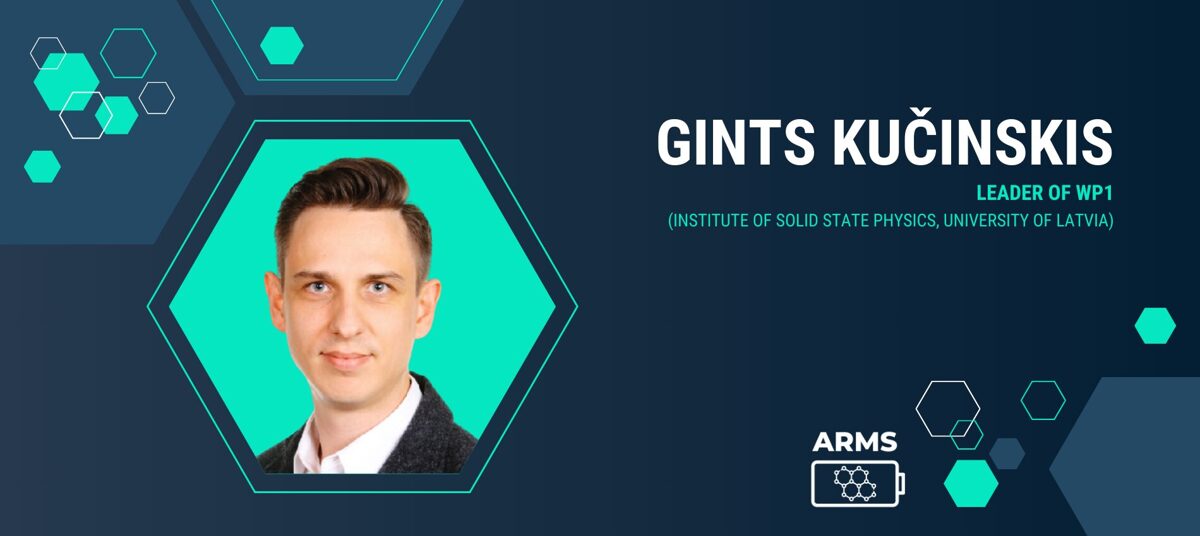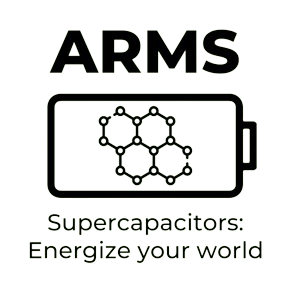WP 1 leader Gints Kučinskis, Institute of Solid State Physics, University of Latvia

Dr. Gints Kučinskis, PhD, is a leading researcher and the head of the Energy Materials Laboratory at the Institute of Solid State Physics, University of Latvia (ISSP UL). He has established one of the largest battery materials research groups in the country, showcasing his deep expertise and commitment to the field. Gints' interest in physics was ignited by an enthusiastic teacher in school, making it a natural choice for him to study physics at the University of Latvia.
With over five years of experience in battery materials research at institutes in Germany, Dr. Kučinskis focuses on lithium and sodium-ion battery materials and materials for supercapacitors. His work explores environmentally friendly alternatives and investigates the aging processes of these materials.
Driven by a desire to contribute to society and innovate new technologies, Gints emphasizes the importance of patience, perseverance, and curiosity in scientific research. In his spare time, he enjoys outdoor activities and traveling.
Why did ISSP UL join the ARMS project consortium? What potential does it bring to the project?
The Institute of Solid State Physics, University of Latvia (ISSP UL) joined the ARMS project consortium to leverage its expertise in materials science, particularly in developing advanced energy storage solutions. ISSP UL contributes to the project through its Energy Materials Laboratory, which focuses on lithium and sodium batteries and supercapacitors.
In the AMRS project, the ISSP UL leads Work Package 1 (WP1 – Graphene containing biobased carbon). Additionally, the institute oversees communication and dissemination activities under WP7, ensuring effective sharing of project developments.
Our advanced facilities, state-of-the-art equipment for synthesizing and characterizing materials, and the interdisciplinary team drive innovative research, contributing to the project's goal of developing high-performance, eco-friendly supercapacitors. Connections with other academic, industrial, and research entities help to enhance the project’s outreach and impact further.
What do you do in WP1, and why does it matter to everyday consumers?
In WP1, we work closely with other project ARMS partners – Latvian State Institute of Wood Chemistry, InnoCell, and KTH Royal Institute of Technology. Together, we are developing graphene-containing carbon materials from plant-based sources for supercapacitor electrodes. The objectives include creating cost-effective, nitrogen/phosphorous-doped carbon nanomaterials, characterizing their properties, and scaling up production to support the fabrication of high-performance supercapacitors. ISSP performs structural and electrochemical characterization, enabling iterative optimization of the materials synthesis for improved electrochemical performance of the supercapacitors.
The innovative methods in WP1 aim to develop sustainable, bio-based carbon materials free from toxic substances and heavy metals. These advancements are significant for everyday consumers as they enhance safety by reducing exposure to hazardous materials, particularly in electronics and toys. They also have a positive environmental impact by utilizing renewable resources and minimizing harmful waste, meeting the growing demand for eco-friendly products. Additionally, these methods improve performance by enhancing energy storage capabilities without compromising safety or environmental standards, leading to better-performing electronic devices like longer-lasting batteries. These innovations promise safer, more sustainable products that align with consumer expectations for performance and environmental responsibility.
How does collaboration across different teams enhance the work being done in WP1, and what unique perspectives do these collaborations bring?
Working together in WP1 helps create better graphene-based materials for supercapacitors. Different partners, like LSIWC, ISSP, and IC, bring their unique skills, from making and testing raw materials to turning them into new supercapacitor technologies. For instance, LSIWC specializes in developing high-quality activated carbons from biomass, while ISSP provides advanced characterization techniques for rapid feedback on material performance. This teamwork ensures that the materials meet the high standards needed for supercapacitors.
Additionally, this collaboration allows teams to explore new ways to make and improve materials. For instance, experts from KTH and AIMEN work on making electrodes with fewer inactive binders, which boosts energy density. Combining knowledge from materials science, chemical engineering, and industrial design speeds up innovation. It makes the materials more scalable and eco-friendly, putting the ARMS project at the forefront of green energy storage solutions.
How are sustainability and environmental impact considered in developing new materials within WP1, and why is this important for the future?
Developing new materials in Work Package 1 (WP1) is deeply rooted in sustainability and reducing environmental impacts. We're using biomass-based materials, such as leaf-derived graphene and black liquor from the paper-making process, which come from renewable resources and help reduce waste. Our manufacturing processes are designed to be eco-friendly, avoiding toxic substances to protect both the environment and human health.
Focusing on sustainable materials is crucial for environmental protection, promoting a circular economy, and ensuring health and safety. By creating less harmful materials, the project helps combat pollution and resource depletion, supports recycling and waste reduction, and enhances safety for consumers and workers. This approach is essential for achieving a healthier, more sustainable future.
What personal and organizational expectations do you have from the ARMS project?
The real strength of ARMS is the collaboration between 11 diverse partners, each bringing unique expertise. It’s an excellent opportunity to exchange knowledge, learn from others, and share what we know. Furthermore, well-managed projects like this don’t just drive innovation—they create lasting connections.
From an organizational perspective, I expect ARMS to push the boundaries of carbon-based and ALD-processed supercapacitors, delivering real progress in energy storage. I am confident we will achieve meaningful results that can benefit both research and industry.
Personally, I am excited to see our work come to life in practical applications like flexible and structural supercapacitors for sensors and drones, and I am keenly following the results. More than anything, I hope the collaborations we have built here continue beyond the project, leading to even more exciting discoveries and innovations in the future.
What are some potential real-world applications for the materials being developed in WP1, and how might they impact energy storage?
The materials being developed in WP1 have a wide range of potential applications. They could power everyday items like remote controls, IoT sensors, and toys, and also be used in larger-scale applications like electric cars and energy grids. These applications can help balance energy use and reduce environmental impact.
These materials are essential for energy storage. The supercapacitors made from these eco-friendly materials can store much energy, similar to batteries, but without the harmful environmental effects. Using these green energy storage solutions helps create a cleaner environment and supports the move to renewable energy, making our energy systems more efficient and sustainable for the future.
